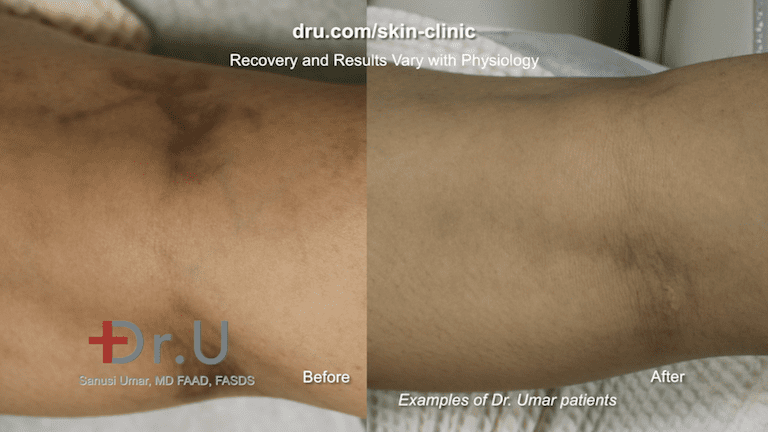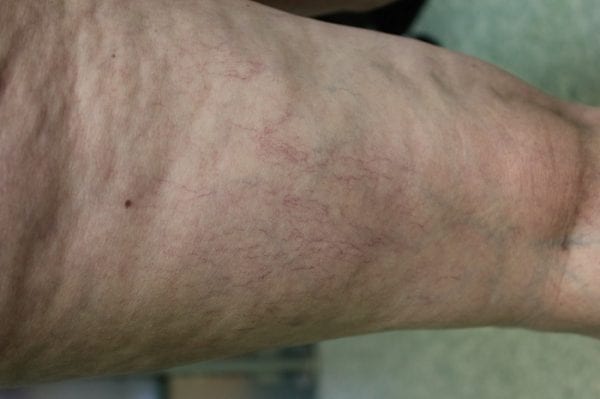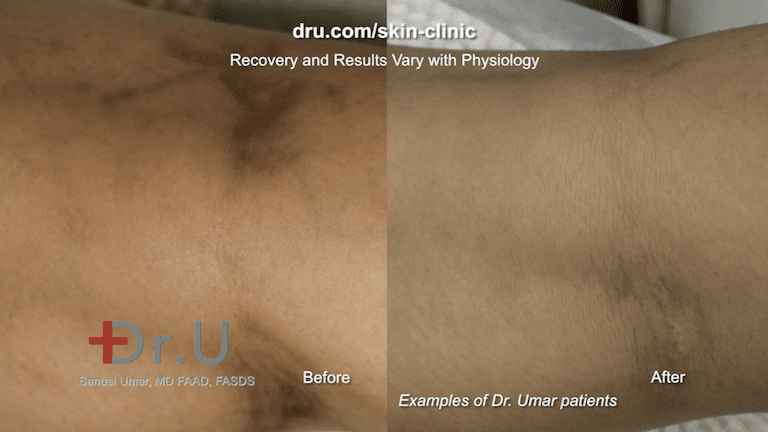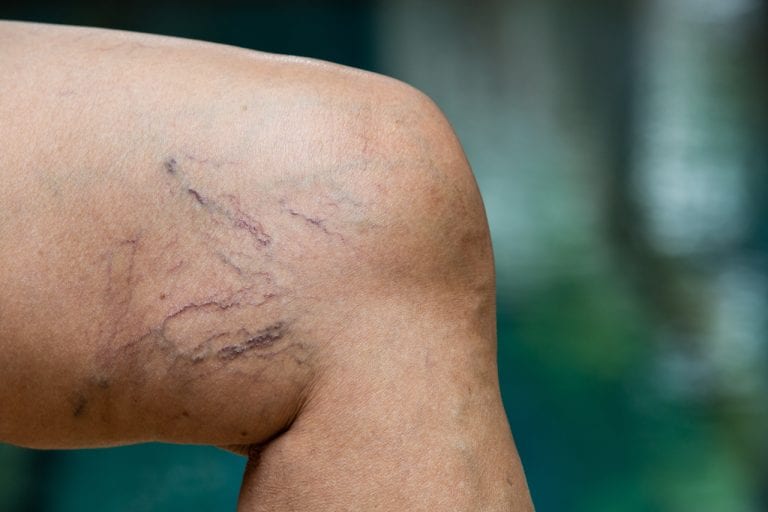Spider veins are (often unsightly) veins in the legs or thighs. The treatment of spider veins is mostly cosmetic in nature. These veins can appear prominently and be a source of embarrassment, prompting people to look for spider vein treatment. Watch the Q&A vlog below to hear Los Angeles-based Dr. Umar’s answer frequently asked questions about spider veins on legs.
What are Varicose Veins in Legs?
Varicose veins are enlarged veins. Any vein has the potential of becoming varicose. For the most part, this issue tends to predominantly affect the feet and legs. This is because of the pressure put on veins in these lower areas due to excessive periods of standing and walking. Spider veins are a mild and more common form of varicose veins.

Types of Varicose Veins
As explained in the video above, there are different types of varicose veins. The ones located near the surface fo the skin, which can appear thick and bumps in the skin, are aptly called trunk varicose veins. Reticular varicose veins, on the other hand, are red and in closed networks of veins.

Telangiectasia varicose veins can appear as small groups of blue or red veins. These kinds of veins are not harmful may be present on the face or legs.
Treatment Options for Spider Veins on Legs
There are usually no symptoms associated with the onset of spider veins. Some report mild discomfort. While they mostly affect women, men can also have spider veins.
There are two types of treatment we employ for spider veins. One type of treatment is laser leg vein surgery. The second involves injections.

Contact the Dr. U team to learn more about varicose veins and treatment. If you’re in the Redondo Beach, Manhattan Beach, or greater Los Angeles area, use this button to get started on your free consultation:
[dt_button link=”/skin-clinic/free-consultation/” target_blank=”false” button_alignment=”center” animation=”fadeIn” size=”big” style=”default” bg_color_style=”default” bg_hover_color_style=”default” text_color_style=”default” text_hover_color_style=”default” icon=”fa fa-chevron-circle-right” icon_align=”left”]FREE CONSULTATION[/dt_button]Deciding on Type of Treatment for Deep Veins of the Leg
As a rule of thumb, treatment begins with the measurement of the thickness of the veins. These results are used to decide on the type of treatment they will require.
For veins that are 3mm or less in width, Dr. U’s methodology advocates for laser surgery. A comparative study published in Dermatologic Surgery by Dr. U et al found the Nd: YAG laser to more effective than Diode and Alexandrite lasers in treating leg veins of this size. The study also confirms that the ND: YAG laser the most versatile because it can be used on all skin types including darker skin tones. This is due to the long waves it administers to the skin.

External laser leg vein surgery essentially targets the blood vessel under the skin, synching it closed. In most cases, more than one removal session is needed, usually scheduled for every 6 to 12 weeks. Recovery is time is usually short and patients can still walk afterward.
Treatment for Large Bulging Veins in Legs
We recommend injections for veins measuring 3mm or greater. Sclerosants are injected into the vein in order to shrink them. There are possible complications in cases where the veins are very small and the sclerosant leaks into the surrounding tissue. this can cause severe bruising, tissue destruction, and in some cases, ulcers. Dr. Umar is an expert with years of experience in administering this kind of treatment and uses FDA-approved sclerosants for removing spider veins on legs out of his Los Angeles-based practice.
Was your question about spider veins on legs not answered in the Q&A vlog? Use this button to submit your inquiry to Dr. U.
[dt_button link=”/skin-clinic/ask-dr-umar/” target_blank=”false” button_alignment=”center” animation=”fadeIn” size=”big” style=”default” bg_color_style=”default” bg_hover_color_style=”default” text_color_style=”default” text_hover_color_style=”default” icon=”fa fa-chevron-circle-right” icon_align=”left”]ASK DR. U[/dt_button]

